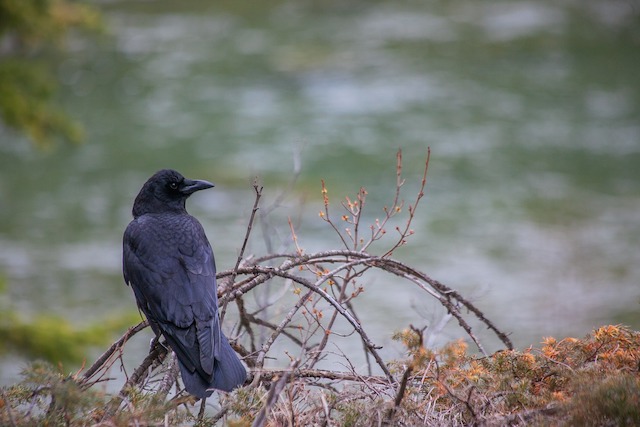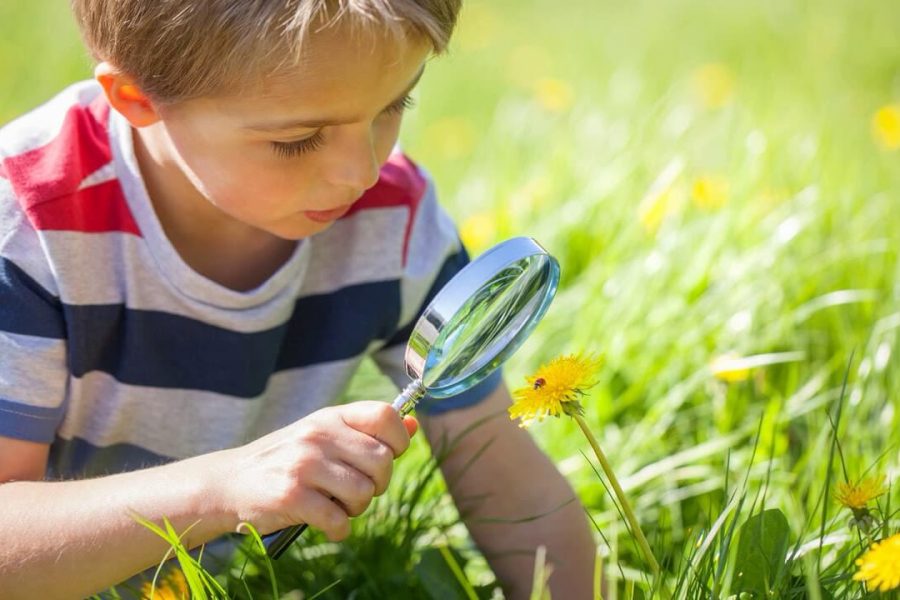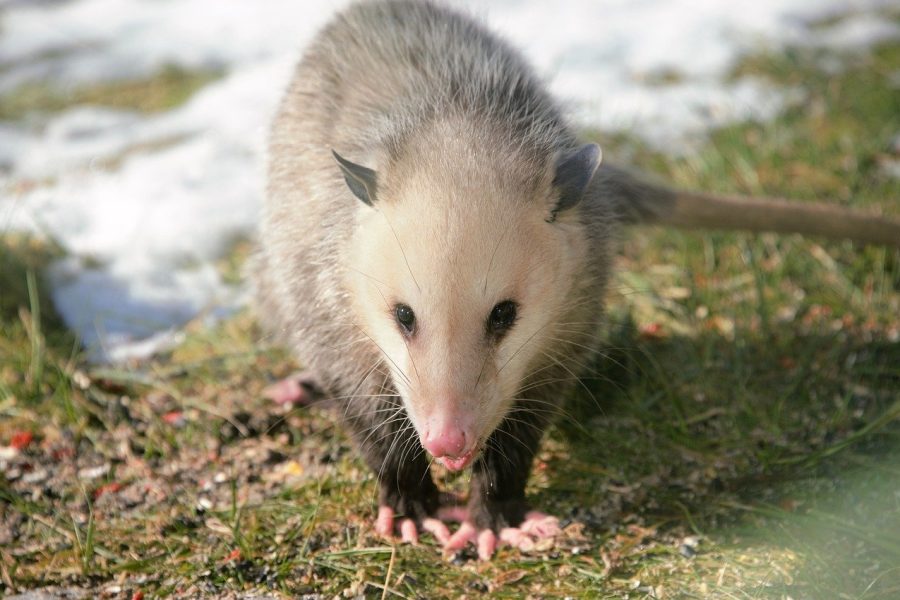Using available box office receipts , superhero movie franchises have grossed over $40 billion to date, which is a pretty decent indicator that people are really into superheroes. But if you’re feeling a little burnt out by all of this, don’t worry. Nature itself offers incredible alternatives to the MCU. In a way, it almost makes sense — why shouldn’t the world’s non-human creatures have superhuman powers?
10. Flying spiders can fly
One of the most basic, yet revered, superhero abilities is flight. Humanity has long envied the birds of the sky and their conscious freedom, so it’s no surprise that superheroes who can fly are a dime a dozen these days. There’s something fascinating about the idea of flight being mastered by a life form that has nothing to do with flight. Take spiders, for example.
Some species of spiders engage in a behavior called ballooning. They stick their butts in the air and shoot strands of web out into the wide open space. The web lifts the spider up and carries it away. They can even travel across oceans doing this. That alone is impressive, but it's worth taking a closer look.
You might assume from reading this that spiders are lifted by the wind. Sothought and scientists. But spiders can hardly rely on the fickle nature of the wind, can they? A hot air balloon doesn't need any wind at all, although that's obviously possible. But even on a windless day, the silk threads they release are able to lift them up thanks to the Earth's electric field.
It turns out that spiders are very attuned to electric fields. The hairs on their bodies can actually sense changes in electric fields, and under the right conditions, they can release strands of silk, allowing repellency charged thread lift them up and away.
9. Dolphins can turn off half of their brains

The world’s oceans still hold many mysteries, and even the ones we know about are pretty amazing. Take a look at the humble dolphin. It’s one of the smartest animals in the world, and has been shown to do amazing things, from helping humans hunt fish to saving people from sharks. But have you ever wondered how a dolphin manages something as simple as sleeping?
Dolphins, like all mammals, need to breathe air. So how do you do it when you're falling asleep in the middle of the ocean? If you're a dolphin, you do it in fractions. They have the ability to turn off the hemispheres of their brain individually. This means that the left half of their brain can doze off while the right half stays awake and makes sure they don't drown or get eaten.
This allows them to continue to float slowly in their sleep, with one eye open, and remain alert in the easiest way possible. This is also important for mothers with babies, as the baby cannot stop floating or it will drown. The mother continues to float and pull the baby along in her air current.
Dolphins breathe consciously , unlike humans, whose breathing is automatic. That's why we don't suffocate in our sleep. But a dolphin must always remain at least partially conscious to control this action.
8. Hummingbirds burn 6 times more calories per day than humans and can fly 500 miles non-stop.
You may not think of a hummingbird as some kind of force of nature, but the truth is that, pound for pound, a hummingbird puts even the world's greatest athletes to shame in terms of physical ability and endurance.
Even though they only weigh a few ounces, these birds are little machines when it comes to what they get done in a day. The average hummingbird can burn between 6000 to 12000 calories in one day. On average, a man burns about 2000 calories per day. An Olympic athlete can burn 4500 pounds . Dwayne "The Rock" Johnson consumes over 5000 calories per day to maintain his physique, meaning you could argue that The Rock is about half a hummingbird.
What can a hummingbird do with all those calories? The Ruby-throated Hummingbird has to migrate every year, and it chooses to do so by flying over the Gulf of Mexico. In one long flight over open water, the bird will fly for almost a whole day 500 miles ocean. Little guys need to gain weight before the flight, and on the way they will lose half of its body weight .
7. Birds can restore their hearing

Near 13% residents The United States suffers from hearing loss in one or both ears. This is about 30 million people. So finding a way to solve this problem and restore hearing is a big task. The answer may come from nature, because it turns out that birds cannot remain deaf forever. The reason is that their ears are able to recover from damage.
If hair cells , which transmit vibrations to your brain that are interpreted as sound, are damaged, that's all. You could lose your hearing forever if they were all destroyed. But birds, and some reptiles and amphibians, simply grow new cells when damaged. Science's discovery of this could lead to a cure for what was once irreversible hearing loss in humans.
The science behind this is complex and there are many hurdles to overcome before it can be potentially help people , but it is a way to travel nonetheless. For now, just know that if you ever meet a deaf bird, it will not remain deaf for long.
6. Beta mandrills physically change to become alphas

Alphas in animal society are something most of us are only casually familiar with. An alpha is the “top” animal in a hierarchy, the boss, so to speak. We have adopted this term in human society, usually negatively. An alpha male is what most people consider a bully. And there is much more to being an alpha than just being the loudest or the coolest.
First of all, no. such a concept , as an alpha wolf. This does not happen in nature, and our understanding of what goes on in wolf society has been based on observations of captive animals. But some species do have alphas, and the colorful mandrill baboons are among them.
The difference between an alpha male and a beta male is striking, and can best be seen by observing what happens when a beta male defeats an alpha. The beta male suffers noticeable physical changes , when it reaches alpha status.
Simply by winning a fight, the beta male gains alpha status. This includes increased testosterone production. His testicles become larger, and the red sexual coloring on his face and genitals increases to attract more female attention.
5. The nudibranch Elysia Marginata can cut off its own head
Most people wouldn't name Elysia marginata as their favorite animal because who the hell even knows what it is? Well, it's some kind of nudibranch or sea slug, and this curious little critter has some pretty heck of a superpower. Like Deadpool, this creature can survive just about anything, and it's willing to push itself to the limit when necessary. For example, it can and will behead oneself.
Scientists believe that this process may be a way to solve problems such as parasites. The slug simply rips off head from its own body and begins the process of growing a completely new body from the severed head. It will come back good as new, with all its vital organs intact, and the slug will be able to live on.
4. Lyrebirds can imitate almost any sound
Lyrebirds are remarkable creatures native to Australia. They have showy tail feathers, live on the ground, and blend in quite well with their surroundings. But the lyrebird's remarkable feature is its unparalleled ability to mimic almost everything, what he hears. He can imitate up to 20 different birds in one song and uses this to try to lure a mate.
The lyrebird doesn't stop at stealing tunes from other birds, though. Their sharp ears pick up every sound they encounter in the wild. This has led to some remarkable videos of these birds not only mimicking their feathered brethren, but also things like car alarms, camera shutters, and even chainsaws Mimicry is uncanny and in many cases almost indistinguishable from the original.
3. Pumas are unparalleled farmers

When you think about the ability to grow plants and have a green thumb on the scale of a character like Poison Ivy, you're unlikely to get lost in the animal kingdom at all, since most animals don't even seem to have a clue about how seeds and planting work. And guess what? It's true. But just because a cougar doesn't know she's a great farmer doesn't make her untrue.
Research shows that a large predator like a puma can throw tens of thousands of seeds over a wide area. Pumas scatter and fertilize about 5,000 seeds per square kilometer, and the second point explains how this is done. Pumas are apex predators, and their prey is usually herbivorous. They eat animals that eat plants and seeds, and these seeds pass through their digestive tract unhindered. As they travel through their territory, they will inadvertently plant up to 94,000 new fruits, flowers and other plant species to keep the whole cycle going year after year.
2. F. Oxysporum Fungus wears golden armor
There are plenty of organisms in the world that could be compared to Iron Man, from turtles to armadillos to mollusks, depending on how fast and loose you want to play with the concept. But do any of them have Tony Stark's instincts? One does. It's called Fusarium oxysporum , and what it lacks in a cool name, it makes up for in hard-working demeanor.
Fusarium is a fungus that mines gold This pink mushroom, found in Australia, can detect gold molecules in the soil and dissolve them As the fungus grows, it produces tiny, thread-like tendrils. These tendrils suck up the gold and become encrusted with it in the process. The researchers also noted that the fungus that found the gold actually grew larger than the fungus that failed to do so.
The process occurs in the soil and at a microscopic level, so you're unlikely to see golden mushrooms in the forest anytime soon. However, if there was enough gold, who knows?
1. Newts can regenerate almost anything

Any superhero worth their salt has to be cool. They have to be able to be defeated by the likes of Thanos or Stiltman. And they can't be super-strong like the Hulk or nearly invulnerable like Superman. Sometimes things have to get a little rough and tumble, like they can in the life of a fire-bellied newt.
Many amphibians are known for their regenerative abilities. If they lose a toe or a tail, they can grow it back. Fire-bellied newts are the same, but on a whole new, incredible level. In experiments, newts have been shown to regenerate their eyes. 18 times in a row for 16 years, and each time the new eyes were as intact as the originals.
Newts are able to survive and recover from severe injuries that would kill most other life forms, such as damaged spinal cord Hypoxia, the lack of oxygen in tissues that causes things like brain death, is overcome by some newts, who can even create new brain tissue for subsequent restoration of the organ. Even heart damage can be overcome: newts are able to regenerate after damage to up to 10% and up to 20% of heart tissue.













Оставить Комментарий